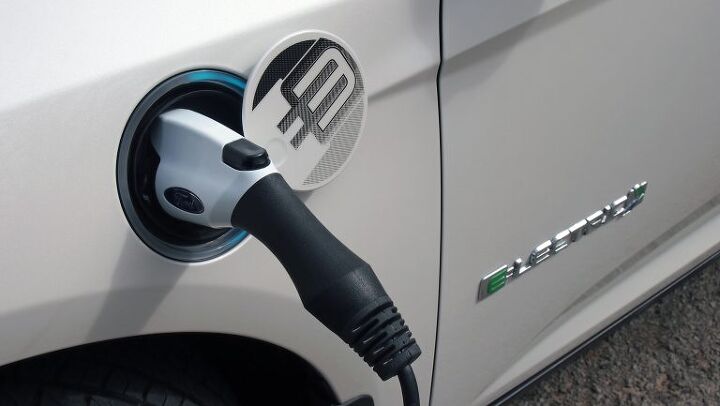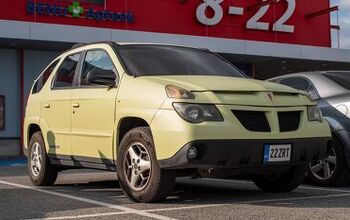Oh, the Places You Won't Go on the Obama Administration's 48 EV Corridors

Battery electric vehicles are supposedly the future, but you’ll need an EV with plenty of range if you want to visit some of the areas overlooked by the Obama administration’s new charging corridor plan.
Earlier today, the White House announced 48 electric vehicle charging corridors spanning 25,000 miles of highway in 35 states and the District of Columbia. The electrified routes, established a month before the government was required to do so under federal law, will place a recharging station within reach of even the wimpiest electric vehicles. That means 50 mile intervals at a minimum.
For some areas, nervous EV road trippers would be best served by a gas guzzler or low-cost airline.
The announcement follows this summer’s $4.5 billion loan guarantee program designed to spur construction of charging stations. General Electric, BMW, Nissan and General Motors have agreed to help built the network, with the cooperation of numerous utilities, local municipalities and 28 states.
“These initial and future corridors will serve as a basis for a national network of electric vehicle charging infrastructure to enable coast to coast zero emission mobility on our nation’s highways,” the administration stated.
Expect plenty of signage added to those 48 corridors, each of which was included in a slightly longer list of “alternative fuel corridors.” If you’re looking for juice, signs developed by the Federal Highway Administration will tell you where to find it. Chances are drivers will also discover delicious fast food and (hopefully) above par washroom facilities near the electron pump.
Now, where can’t you go on these highways of the future? Plenty of places. The corridors bypass much of the Upper Plains, desert Southwest, Gulf coast and Ohio Valley. Sorry, Biloxi and Bismark. Naturally, both the west and east coasts — as well as Texas and the Midwest — see their EV dreams come true.
Besides the highway network, 24 state and local jurisdictions have signed on to boost their EV fleet and install local charging stations, plus a host of other initiatives. Will it boost EV ownership? The feds sure hope so, as consumers have a nasty habit of failing to meet government expectations.
Obama’s one million EV marker came and went in 2015 with less than half that number sold. According to Reuters, only 520,000 electrics vehicles have sold in the U.S. since his 2008 announcement.
[Image: © 2016 Jeff Voth/The Truth About Cars; Federal Highway Administration]

More by Steph Willems
Latest Car Reviews
Read moreLatest Product Reviews
Read moreRecent Comments
- Michael Gallagher I agree to a certain extent but I go back to the car SUV transition. People began to buy SUVs because they were supposedly safer because of their larger size when pitted against a regular car. As more SUVs crowded the road that safety advantage began to dwindle as it became more likely to hit an equally sized SUV. Now there is no safety advantage at all.
- Probert The new EV9 is even bigger - a true monument of a personal transportation device. Not my thing, but credit where credit is due - impressive. The interior is bigger than my house and much nicer with 2 rows of lounge seats and 3rd for the plebes. 0-60 in 4.5 seconds, around 300miles of range, and an e-mpg of 80 (90 for the 2wd). What a world.
- Ajla "Like showroom" is a lame description but he seems negotiable on the price and at least from what the two pictures show I've dealt with worse. But, I'm not interested in something with the Devil's configuration.
- Tassos Jong-iL I really like the C-Class, it reminds me of some trips to Russia to visit Dear Friend VladdyPoo.
- ToolGuy New Hampshire



































Comments
Join the conversation
http://www.thetruthaboutcars.com/2013/02/plus-ca-charge-electric-touring/ 1914 guide to charging stations on the Lincoln Highway: http://i2.wp.com/www.sociabilityrun.org/wp-content/uploads/2013/05/EVLH-475.jpg
Let's spend all our infrastructure funding on EV charging systems rather than repairing our decaying bridges and repaving our third world roads. What could possibly go wrong?